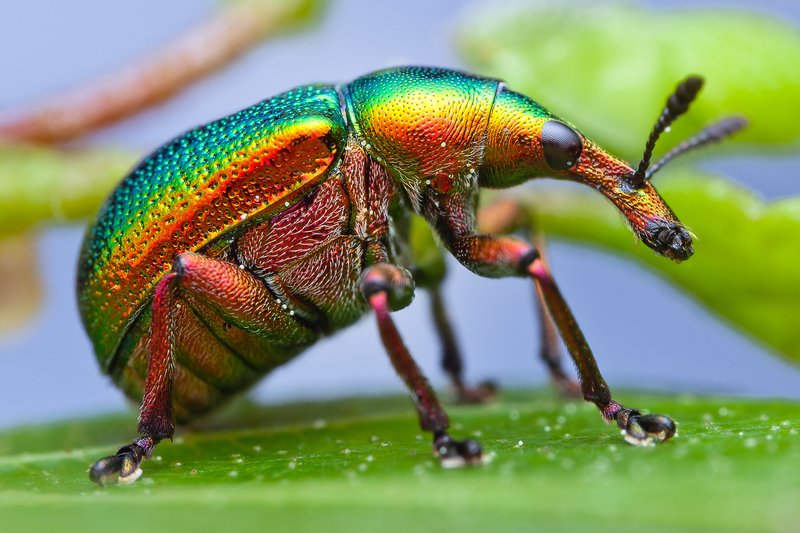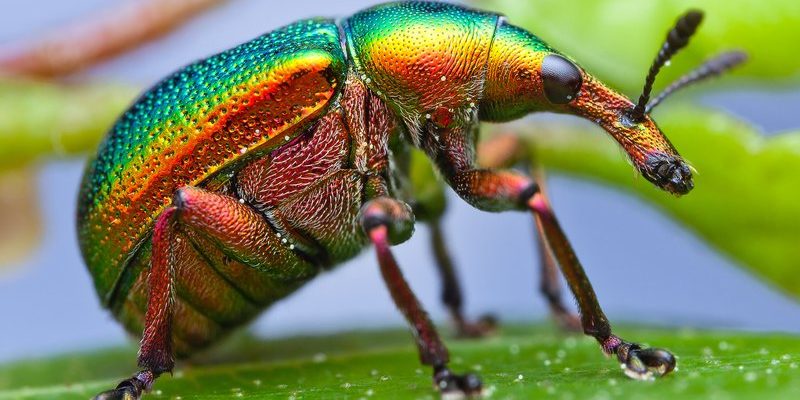
In a way, studying weevils is like peering through a keyhole into a vast world of ecological interactions, evolutionary adaptations, and even agricultural impacts. Imagine opening a window and discovering a whole new realm of knowledge. That’s what scientists experience when they dive into research on weevils. Researchers have explored everything from their genetic makeup to their impacts on food security, contributing to a deeper understanding of the balance of nature and how little creatures can make a big difference.
So, let’s crack open the fascinating world of weevils and see how scientists have studied these mighty little beetles.
The World of Weevils: A Quick Overview
Before we dive into the nitty-gritty of research, it helps to know a little about weevils themselves. Belonging to the family Curculionidae, weevils are a type of beetle characterized by their elongated snouts. You might find them snacking on grains, nuts, or even plants—and sometimes your pantry is their buffet.
There are thousands of species of weevils, each adapting to its environment in unique ways. Some are harmless, while others can be significant pests that affect crops and stored food. This duality makes them interesting subjects for scientists, as studying their behaviors and biology can lead to better pest management practices and enhance our understanding of biodiversity.
Weevil studies often focus on various aspects of their life cycle, morphology, genetics, and even their interactions with other species. Just imagine scientists zooming in to watch how these tiny creatures navigate their world and the role they play in their ecosystems. This perspective opens up a multitude of opportunities for research and discovery.
Understanding Weevil Biology
Weevils have a unique biological structure that sets them apart from other insects. Their anatomy is tailored for survival, with specialized mouthparts that allow them to bore into plants and seeds. This is significant not just for their eating habits, but also for how they interact with plants and other species.
One key area scientists have focused on is their reproductive strategies. Weevils typically lay their eggs inside a food source, such as a seed. When the larvae hatch, they feast on the nutrient-rich interior, ensuring they have a good start in life. This clever strategy highlights how weevils can affect the agricultural landscape, making them essential subjects in crop research.
Additionally, weevils exhibit fascinating adaptive traits. For instance, some can camouflage themselves with the surface of their host plants, helping them avoid predators. This has sparked research into evolutionary biology and how environmental pressures shape species over time. You might be surprised how a simple beetle can give scientists insight into complex themes like natural selection and adaptation.
Weevils in Agriculture
From an agricultural standpoint, weevils can be both friends and foes. Some species are notorious pests, causing significant damage to crops. Scientists have been studying these pest species to find effective, sustainable ways to manage their populations without resorting to harsh chemicals.
For example, researchers look into biological control methods, where they use natural predators or parasites of weevils to keep their numbers in check. This kind of research is vital for maintaining healthy ecosystems while also protecting food supplies.
On the flip side, some weevils play a role in decomposition and nutrient cycling, breaking down organic matter and enriching the soil. Understanding these dual roles helps scientists provide better recommendations for farmers on how to manage their land sustainably. It’s a delicate balance, and weevils are at the center of it.
Genetic Studies on Weevils
Genetics is another exciting area where scientists have focused their studies on weevils. By examining the DNA of different weevil species, researchers can discover how these beetles evolved and adapted to their environments over millions of years. This area of research can also shed light on how pests develop resistance to pesticides, a growing concern in agriculture.
One exciting aspect of genetic research is molecular markers, which help identify different weevil populations and track their movements. This information is crucial for pest management strategies and understanding how weevils interact with their environments.
Moreover, with advancements in technology, scientists are using techniques like genome sequencing to gather extensive data on weevil DNA. This not only helps in identifying species but also allows researchers to study genes linked to specific traits—like pest resistance or reproductive success. Imagine unraveling a genetic tapestry that tells the story of survival in a tiny beetle!
The Role of Weevils in Ecosystems
Weevils may be small, but they play big roles in the ecosystems they inhabit. By eating and breaking down plant material, they contribute to nutrient cycling—essentially recycling organic matter back into the soil. This process is vital for soil health and plant growth.
Additionally, weevils serve as a food source for various predators, including birds and small mammals. Their presence or absence can have ripple effects throughout an ecosystem. Scientists study these relationships to better understand how weevils contribute to food webs and ecosystem balance.
You might also be surprised to learn that weevils can affect plant community structures. By feeding on certain plants, they can influence which species thrive and which ones struggle. This makes their study critical for understanding biodiversity and ecosystem dynamics as a whole.
Innovative Research Methods
In recent years, scientists have adopted new technologies to study weevils in innovative ways. One approach involves using molecular biology techniques to analyze weevil populations. Techniques like DNA barcoding allow researchers to identify species quickly and accurately, making it easier to study their behaviors and relationships.
Moreover, field studies combined with laboratory experiments provide a comprehensive understanding of weevil dynamics. Scientists might track weevil populations in natural settings, then bring them back to the lab to observe their behavior in controlled environments. This dual approach helps verify findings and deepen insights.
With the rise of data analytics and modeling, researchers can predict how weevil populations might respond to environmental changes or pest management strategies. By simulating different scenarios, scientists gain invaluable knowledge that can help shape future agricultural practices and conservation efforts.
Why Weevil Research Matters
So, why should we care about studying weevils? For one, they impact agriculture on a global scale. Understanding their biology and behavior is crucial for farmers looking to protect their crops and ensure food security.
Moreover, the insights gained from weevil studies can be applied to other pests and ecological issues. By understanding how one species interacts with its environment, scientists can develop broader strategies to tackle challenges like climate change, habitat loss, and biodiversity decline.
At the end of the day, weevils are more than just tiny insects rummaging through our food. They offer a window into complex biological processes and ecological relationships. When scientists study weevils, they unravel a tapestry of life that can inform everything from pest management to conservation practices.
In conclusion, the research surrounding weevils is extensive and ever-evolving. These small beetles are a big deal in the scientific community, highlighting the importance of biodiversity and the intricate connections within ecosystems. So the next time you hear about a weevil, remember, there’s a lot more to them than meets the eye!

